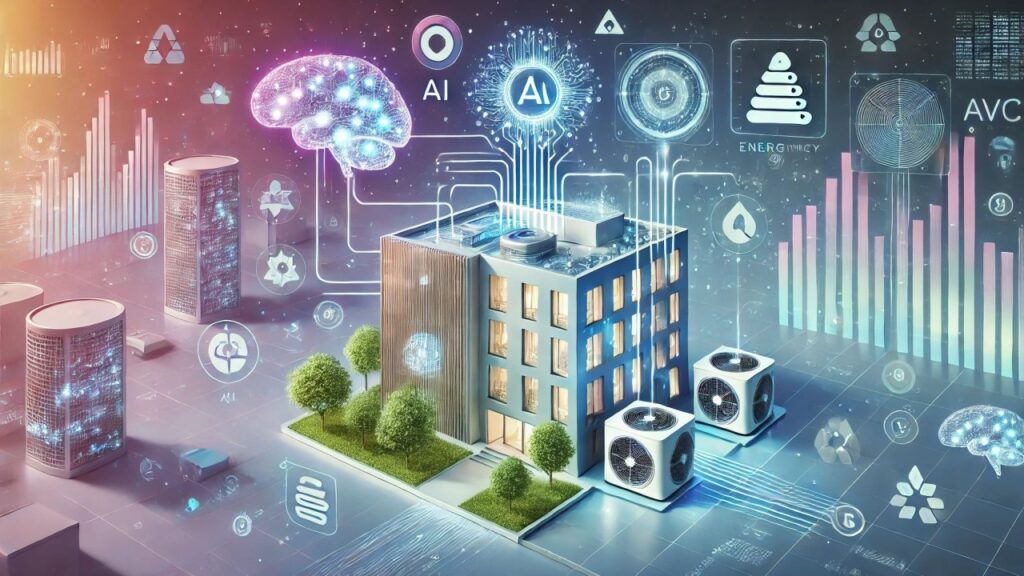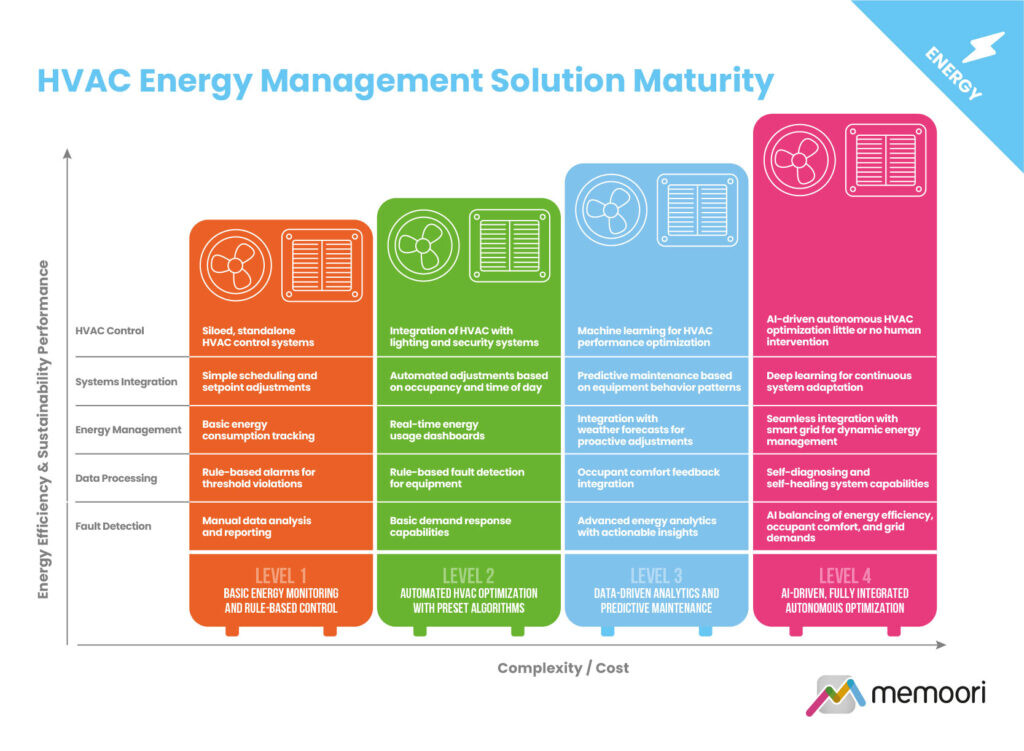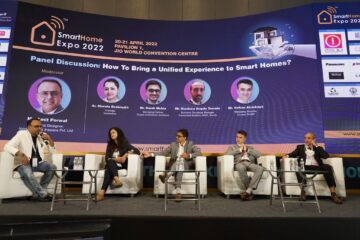AI is Deeply Changing How We Manage Energy.

In commercial buildings, heating, ventilation, and air conditioning (HVAC) systems use more energy than any other system, including lighting. This makes HVAC the best place to save energy and reduce costs. With AI, these systems are becoming smarter, helping property and facility managers lower energy use while improving efficiency and sustainability.
With the implementation of AI we can reach the fourth level of HVAC Energy Management. According to Memoori we can segment four Levels of complexity:
- Basic Systems (Tier 1): These rely on simple energy monitoring and rules for control. They help track energy use but don’t offer much automation.
- Data-Driven Systems (Tier 2): At this stage, systems use basic data analytics and some automation. They allow for better energy management but still need a lot of manual input.
- Predictive Systems (Tier 3): AI and machine learning play a big role here. These systems analyze real-time data and predict future needs, adjusting automatically for better efficiency.
- Autonomous Systems (Tier 4): These advanced systems are powered by AI and need little human input. They optimize HVAC performance on their own, based on patterns like occupancy and weather changes.

What are actually the main improvements brought by artificial intelligence to HVAC systems?
AI’s strength in analyzing large volumes of data to detect patterns beyond human capability. AI optimizes energy use, predicts HVAC issues early to reduce costs, adjusts heating and cooling based on occupancy, and integrates data from multiple sources, creating smarter, more efficient, and waste-reducing systems.
The Growing Market for AI-Driven HVAC
HVAC systems offer the largest opportunity for energy savings. For example, in data centers, cooling alone can use up to 40% of the building’s total energy. By comparison, lighting uses much less energy. This is why improving HVAC efficiency with AI can deliver far bigger benefits.
The demand for HVAC energy management software is growing fast. By 2029, the market is expected to reach $5.83 billion, up from $3.65 billion in 2023, growing at 8.1% annually. Data centers lead the way in using these solutions. AI-powered cooling in data centers adjusts based on real-time factors like server load, weather, and temperature, significantly cutting energy costs.
The Future of AI in HVAC
AI is revolutionizing also HVAC systems, making them smarter and more efficient. These systems learn and adapt, saving more energy than traditional approaches ever could. With the push for greener, more cost-effective buildings, AI-driven HVAC solutions are set to become a key part of energy management in the years to come.
References: Memoori Energy Management Software
Article originally posted on LinkedIn ![]()


